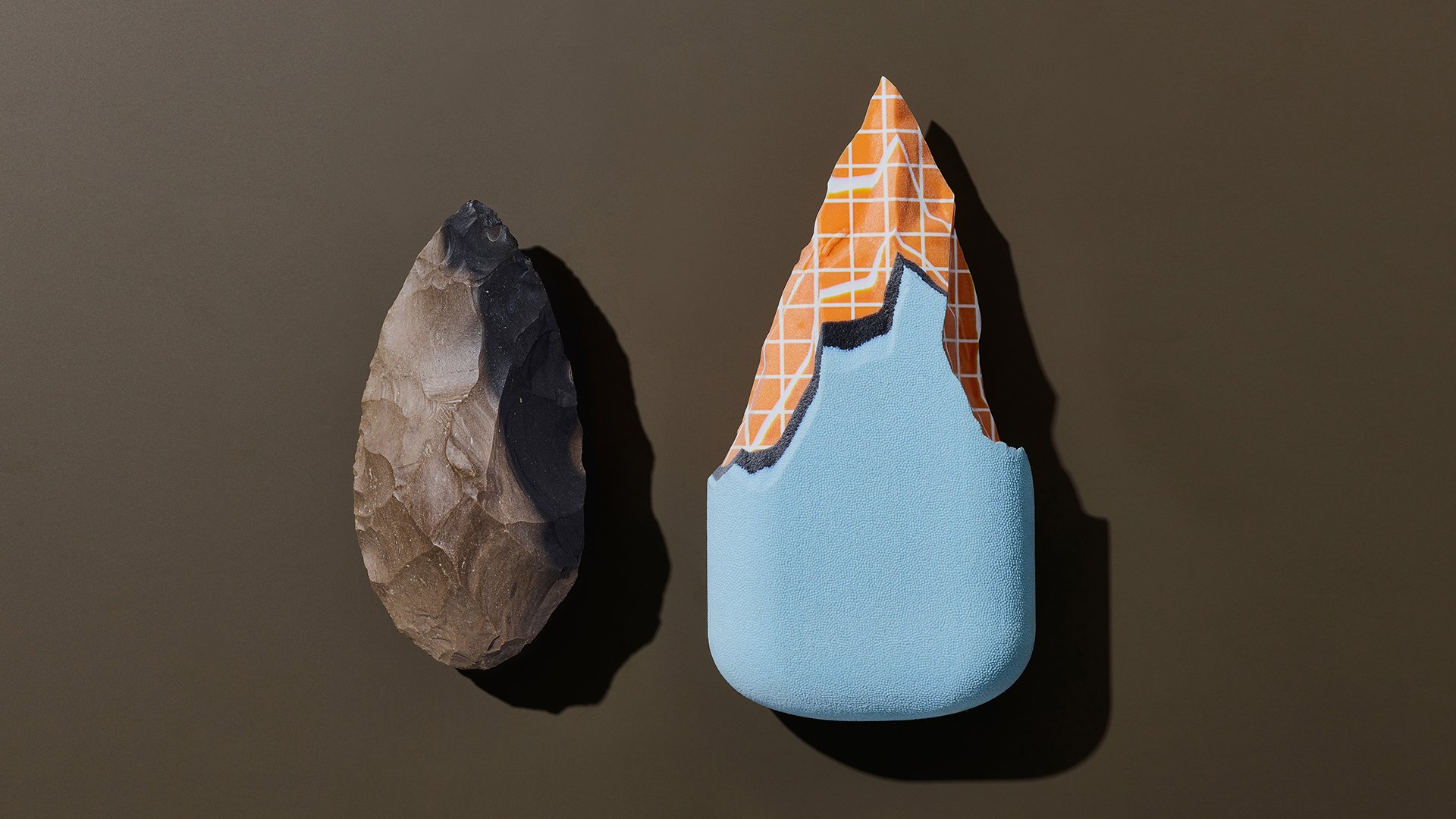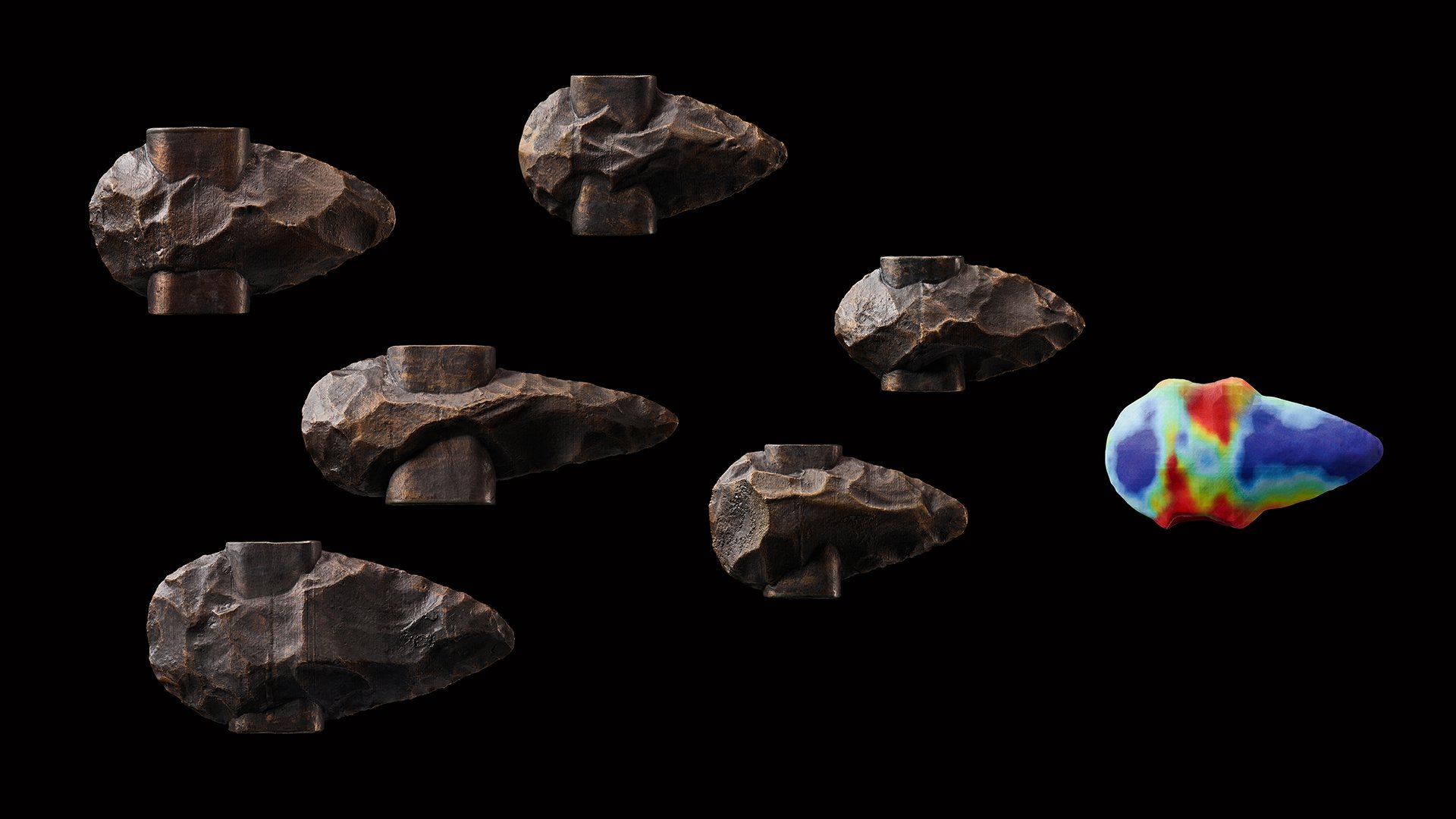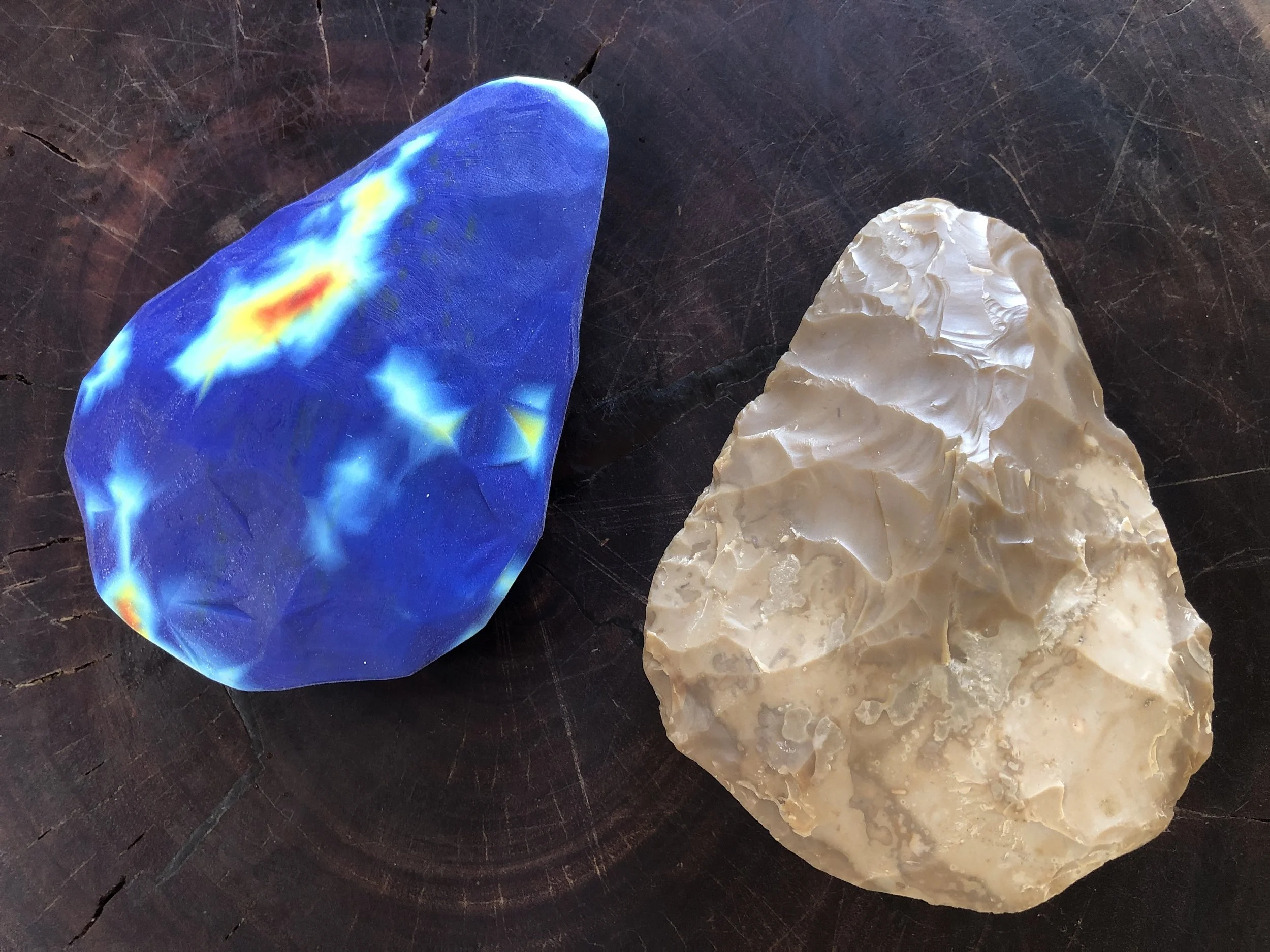To Computational Archaeology and Back
Dov Ganchrow
-
The fields of Design and Archaeology both have a keen understanding of culture as viewed through a material and technological prism. Designing the world around us, just as picking apart a past world, requires the use of tools - often tools developed especially for the task at hand. These tools are artifacts in their own right, and as such are vehicles of culture, legible through their material and technological markers.
Dov Ganchrow presents a series of new design works that journey from prehistory to the present, traveling from the physical through the digital, and reemerging in the physical world, now altered versions of themselves. Knapped flint hand-axes were 3D-scanned, then processed, some by means of algorithmic analytical tools developed for computational archaeology research; they were then digitally fabricated using various technologies and materials. Thus, the hand knapped flint artifacts, paired side-by-side with the digitally fabricated artifacts, allow for a glimpse at the journey traveled, stretching from our distant past to just about now.
Preform
-
A hand-axe was knapped from a flint nodule using basalt hammerstones. It was then 3D
scanned and imported into CAD software, where it was used to “remove material” from a digitally constructed capsule form, until the latter became a hand-axe form. This new hand-axe was then materialized into the physical world using Stratasys’s full color PolyJet 3D printing technology. The area of the capsule that has been worked is clearly visible with the interior color structure of the capsule revealed, and the negative shapes of the hand-axe surface scars contrasting the overall geometric form.
-
Dov Ganchrow
-
Stratasys J850 Prime 3D printer
-
Mifal Hapais; The Israel Lottery Council for Culture and Arts. Prof. Leore Grosman at the Computational Archaeology Lab in the Hebrew University of Jerusalem's Institute of Archaeology. Stratasys.
Photography: Dan Perez.

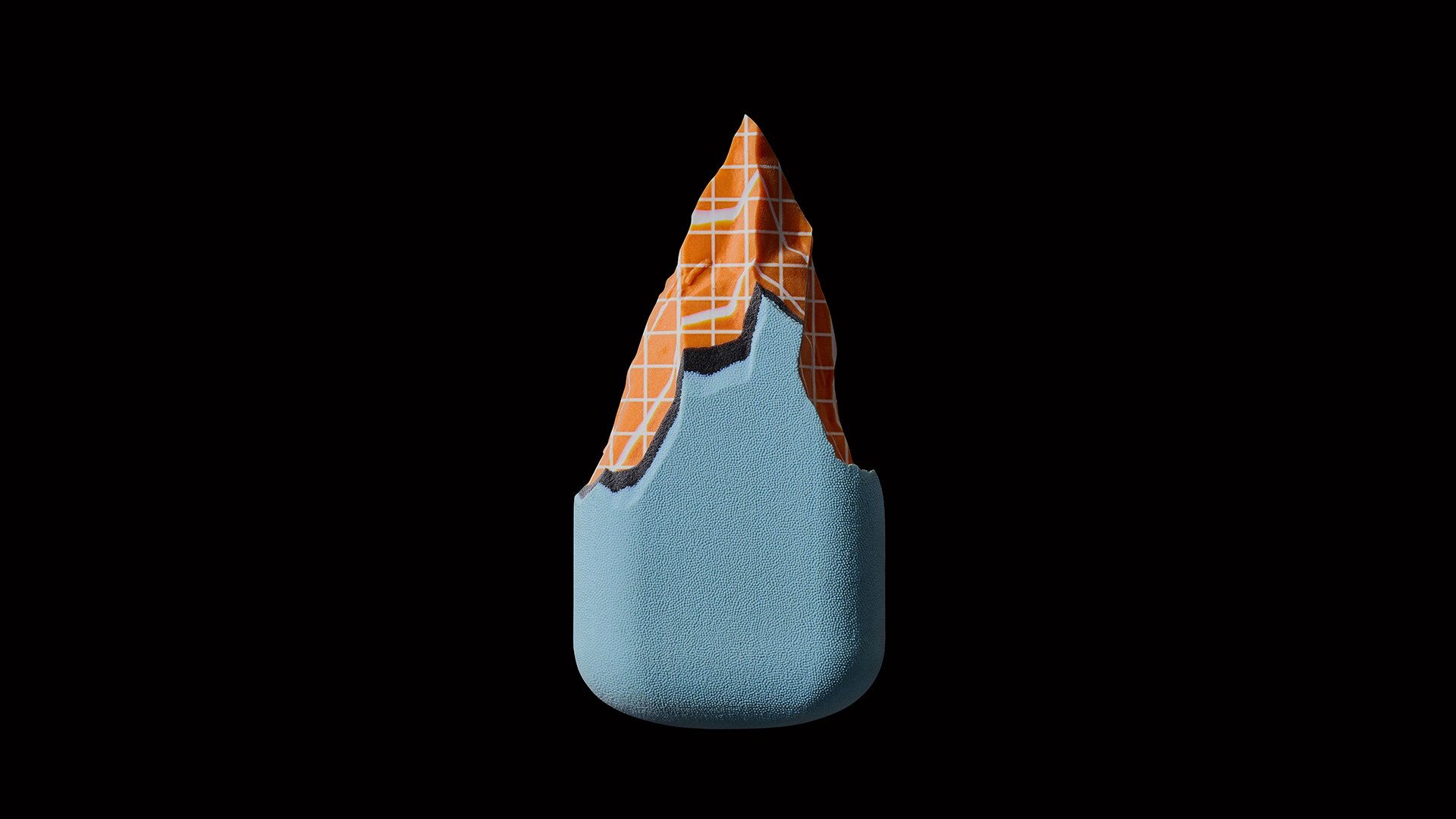

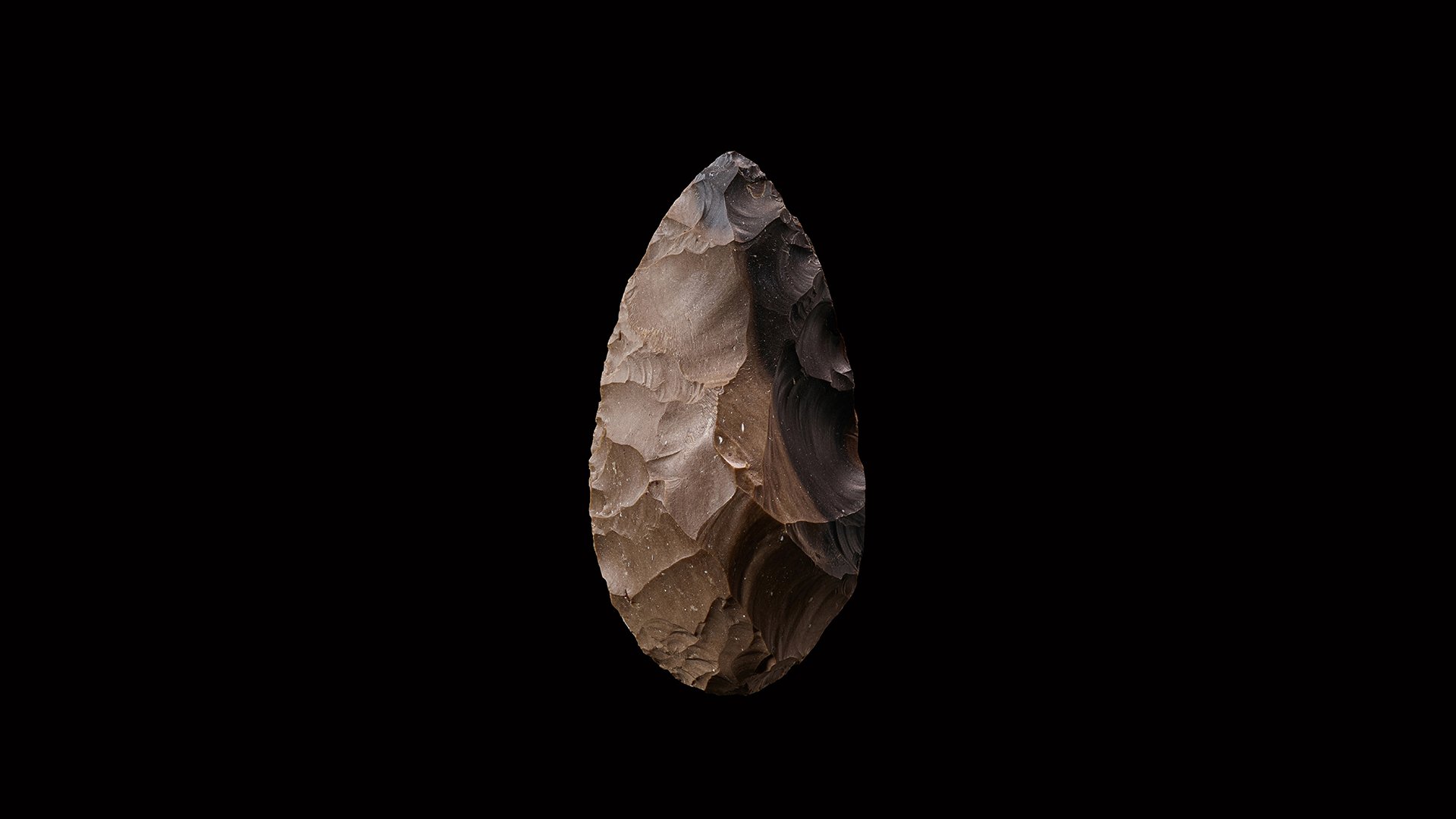
Data Set
-
Six knapped flint hand-axes were 3D scanned; they then underwent further manipulation in CAD software enabling them to be easily hafted to a shaft as though they were traditional forged metal axes. The resulting group of artifacts were then processed using an archaeological analytical tool designed to define the “average” hand-axe form in any given assemblage. The resulting mean artifact was then 3D printed using Stratasys full color PolyJet 3D printing technology.
-
Dov Ganchrow
-
Stratasys J850 Prime 3D printer
-
Item desc: Mifal Hapais; The Israel Lottery Council for Culture and Arts. Prof. Leore Grosman and Dr. Gadi Herzlinger at the Computational Archaeology Lab in the Hebrew University of Jerusalem's Institute of Archaeology. The Industrial Design Department at the Bezalel Academy of Arts and Design, Jerusalem. Stratasys. Dror Revach. ription
Photography: Dan Perez
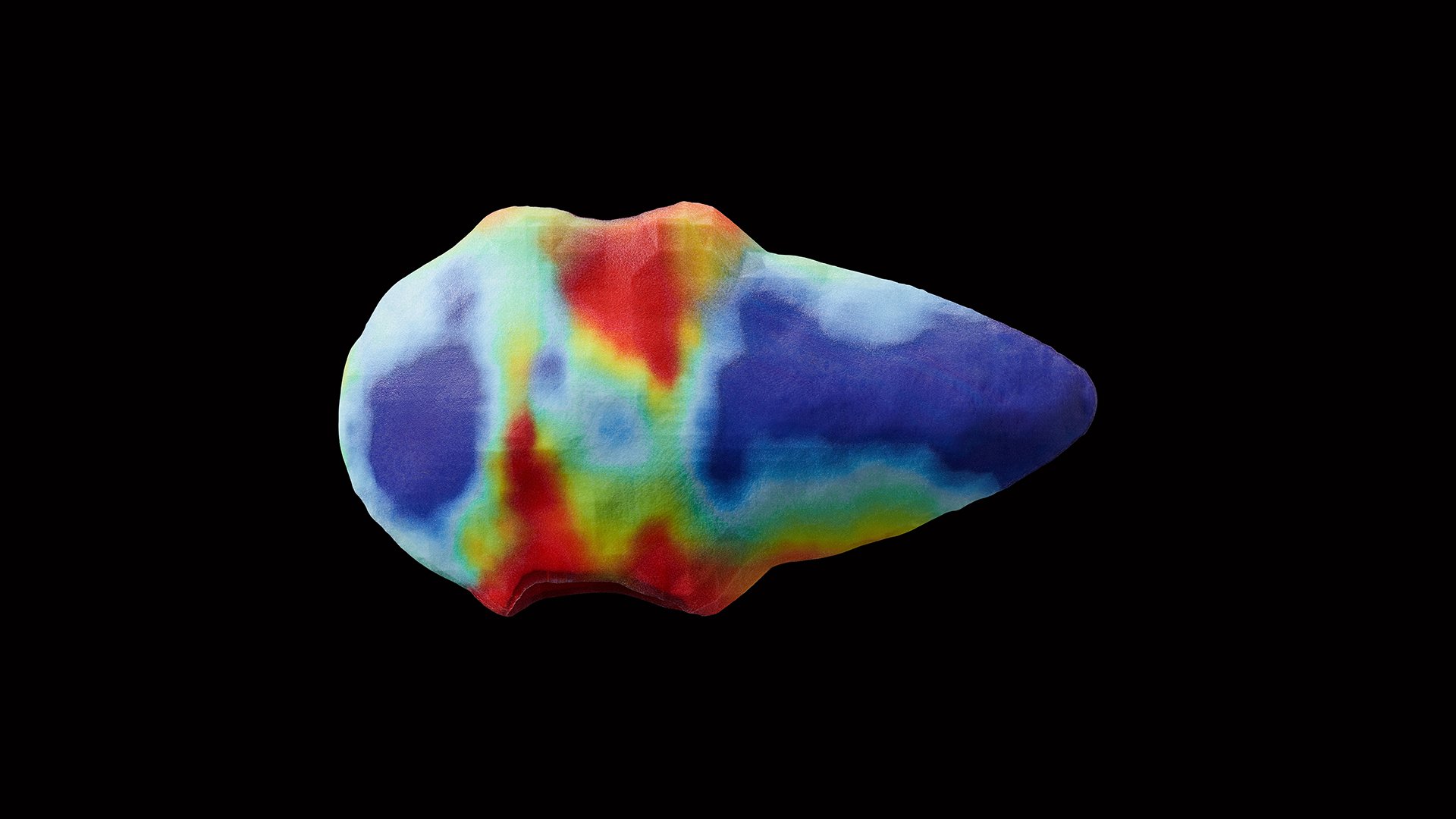


Scar Analysis 02
-
For this series of works, flint nodules from the Negev desert were sourced and knapped into hand-axes. A single hand-axe was positioned three times manually at desirable angles in a program designed to analyze prehistoric stone tool knapping scars and output illustrations as documentation. The 2D scar analytics were exported for laser-cutting and etching of stainless steel, while an illustration-inspired handle was 3D printed using Stratasys full color PolyJet 3D printing technology.
-
Dov Ganchrow
-
Stratasys J850 Prime 3D printer
-
Mifal Hapais; The Israel Lottery Council for Culture and Arts. Prof. Leore Grosman and Dr. Gadi Herzlinger at the Computational Archaeology Lab in the Hebrew University of Jerusalem's Institute of Archaeology. The Industrial Design Department at the Bezalel Academy of Arts and Design, Jerusalem. Stratasys.
Photography: Dan Perez

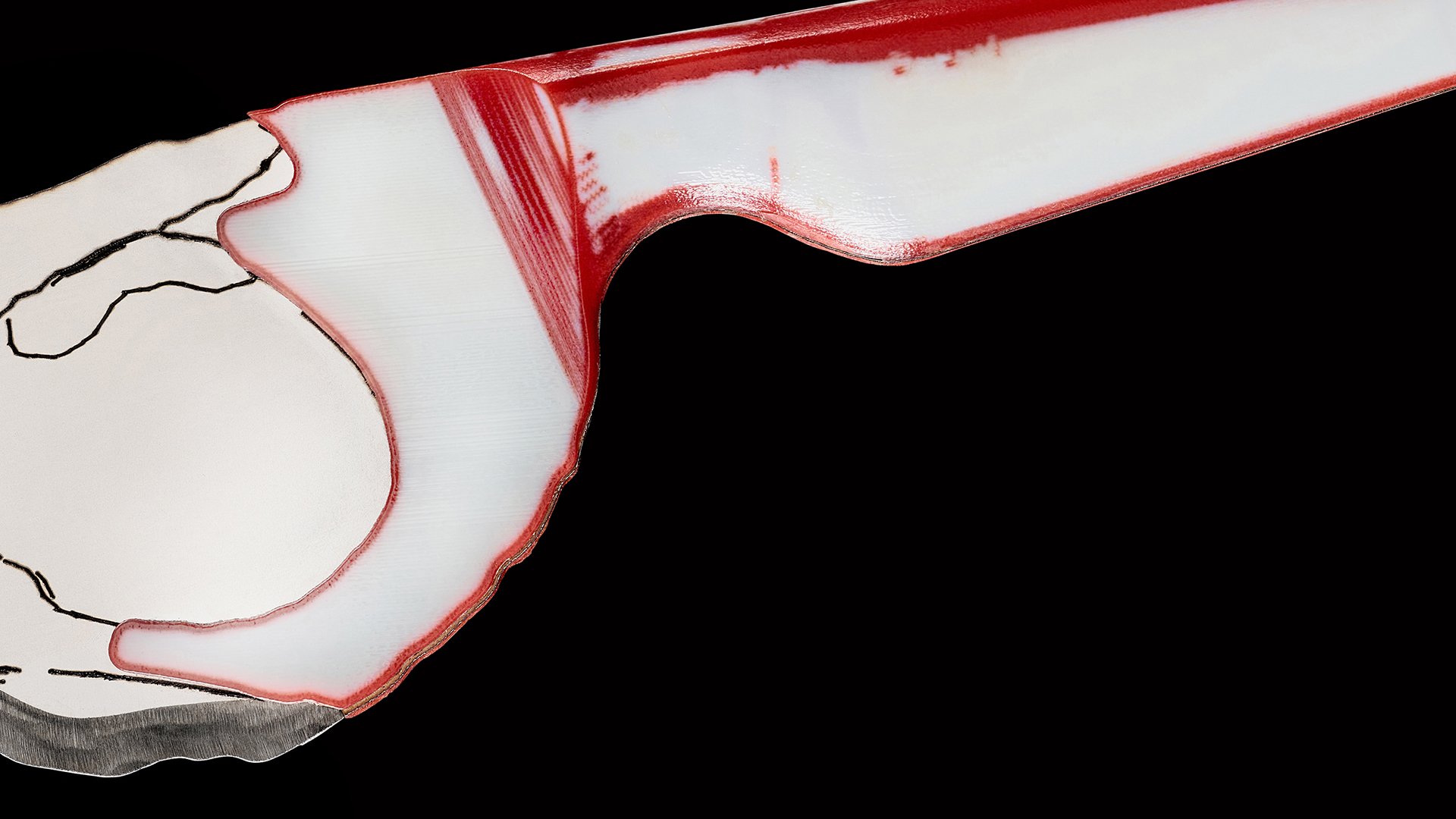

The Inevitable Hand-axe Series
-
In this series of works, raw flint nodules identified as of good potential to be knapped into
tools, were 3D scanned recording both their exterior geometry as well as surface color. The digital nodule was then posed with a mathematical conundrum whose only resolution was to become a sharp shape, to inevitably become a tool. The by-now hand-axe forms were then 3D printed using Stratasys full-color PolyJet 3D printing technology.
-
Dov Ganchrow
-
Stratasys J850 Prime 3D printer
-
Mifal Hapais; The Israel Lottery Council for Culture and Arts. Prof. Leore Grosman at the Computational Archaeology Lab in the Hebrew University of Jerusalem's Institute of Archaeology. Stratasys.
Photography: Dan Perez
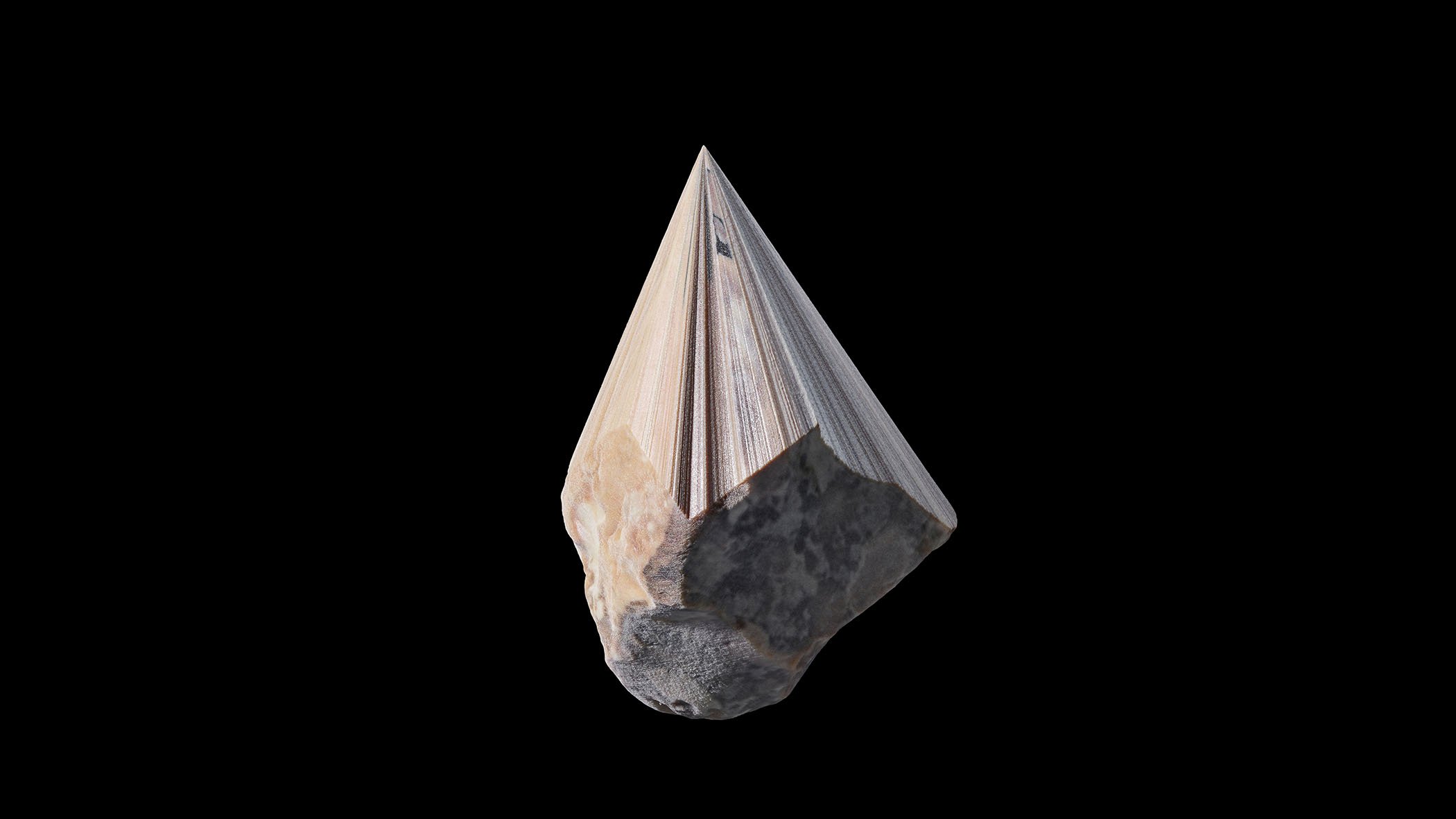
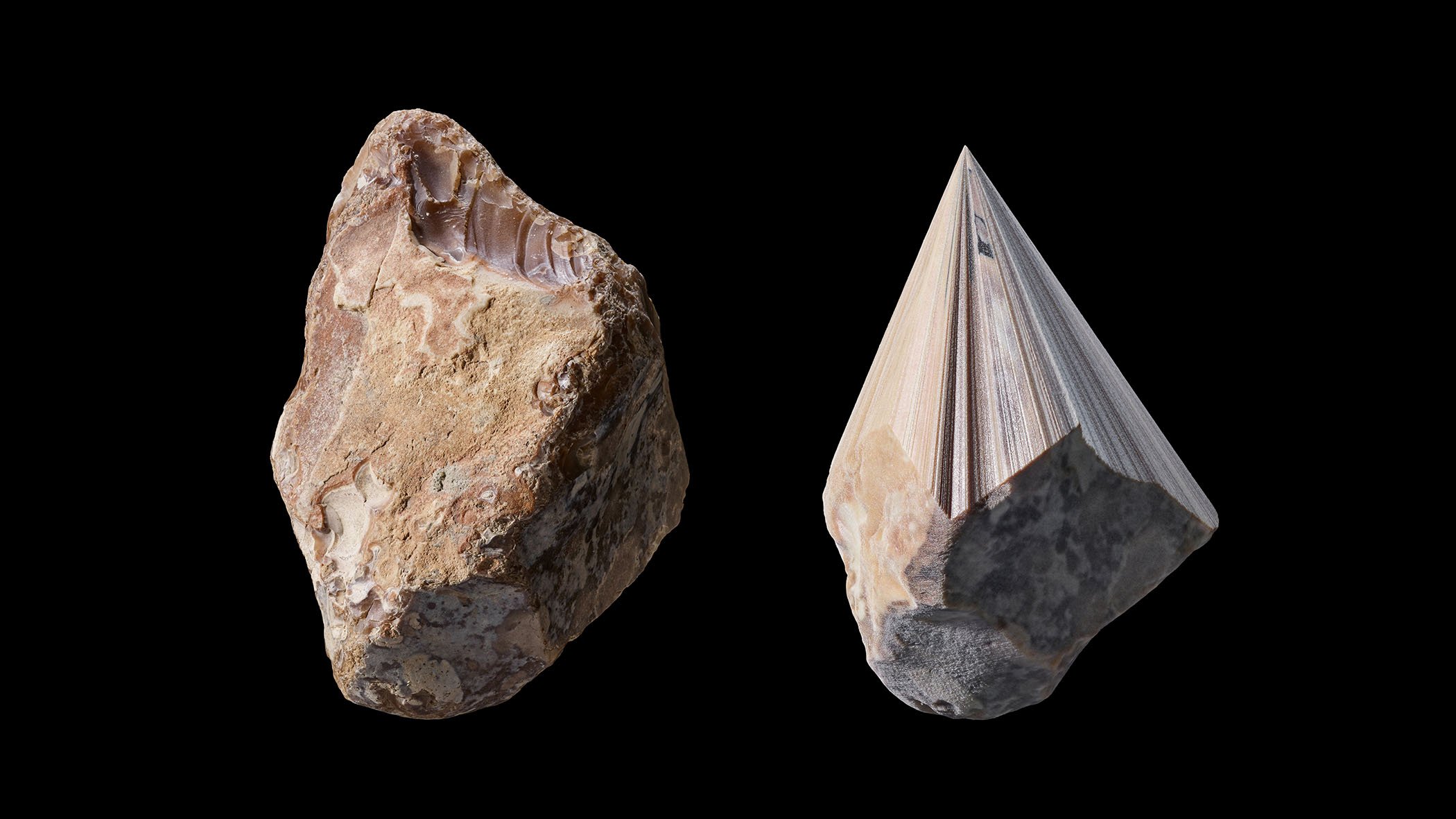
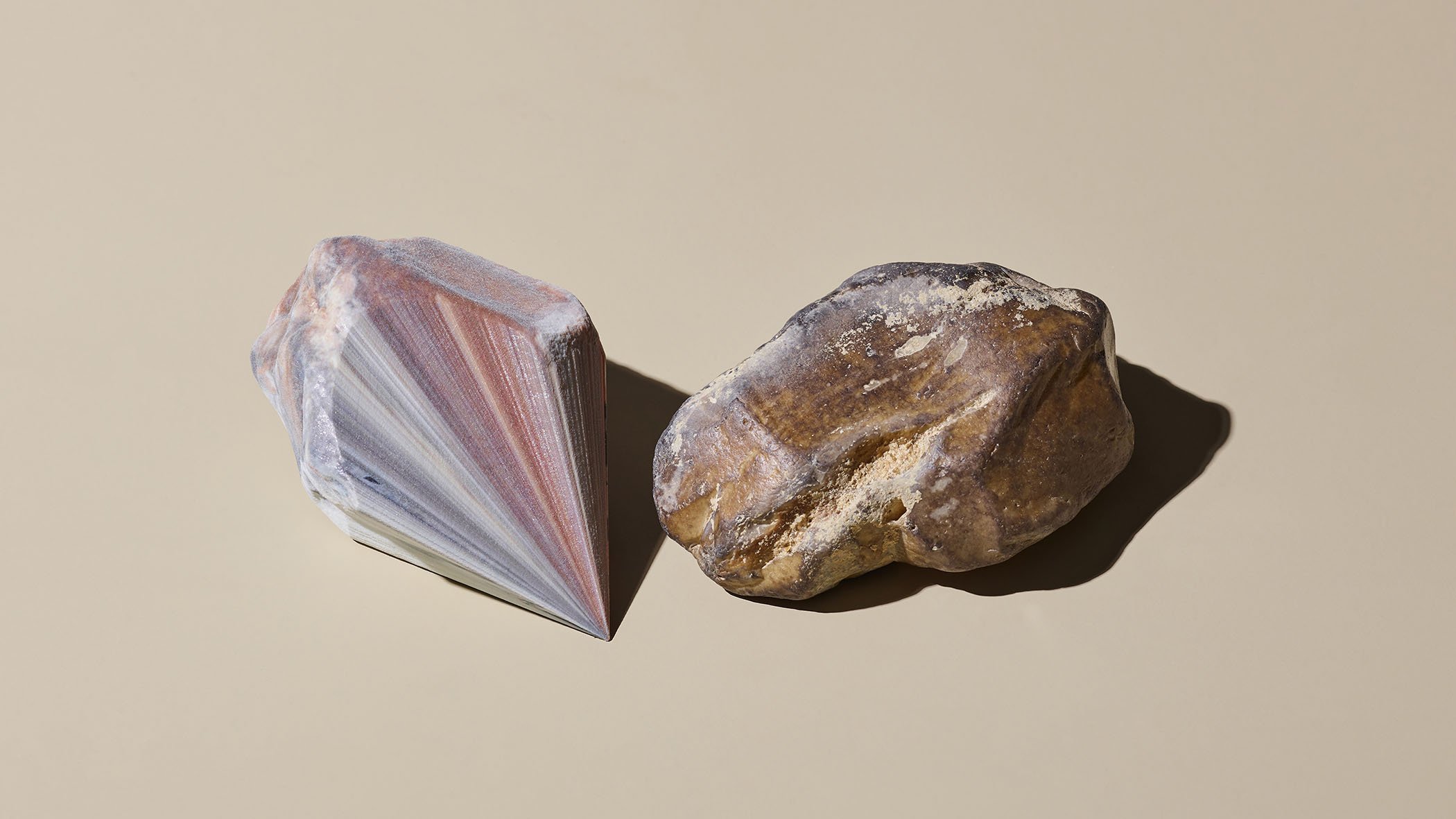
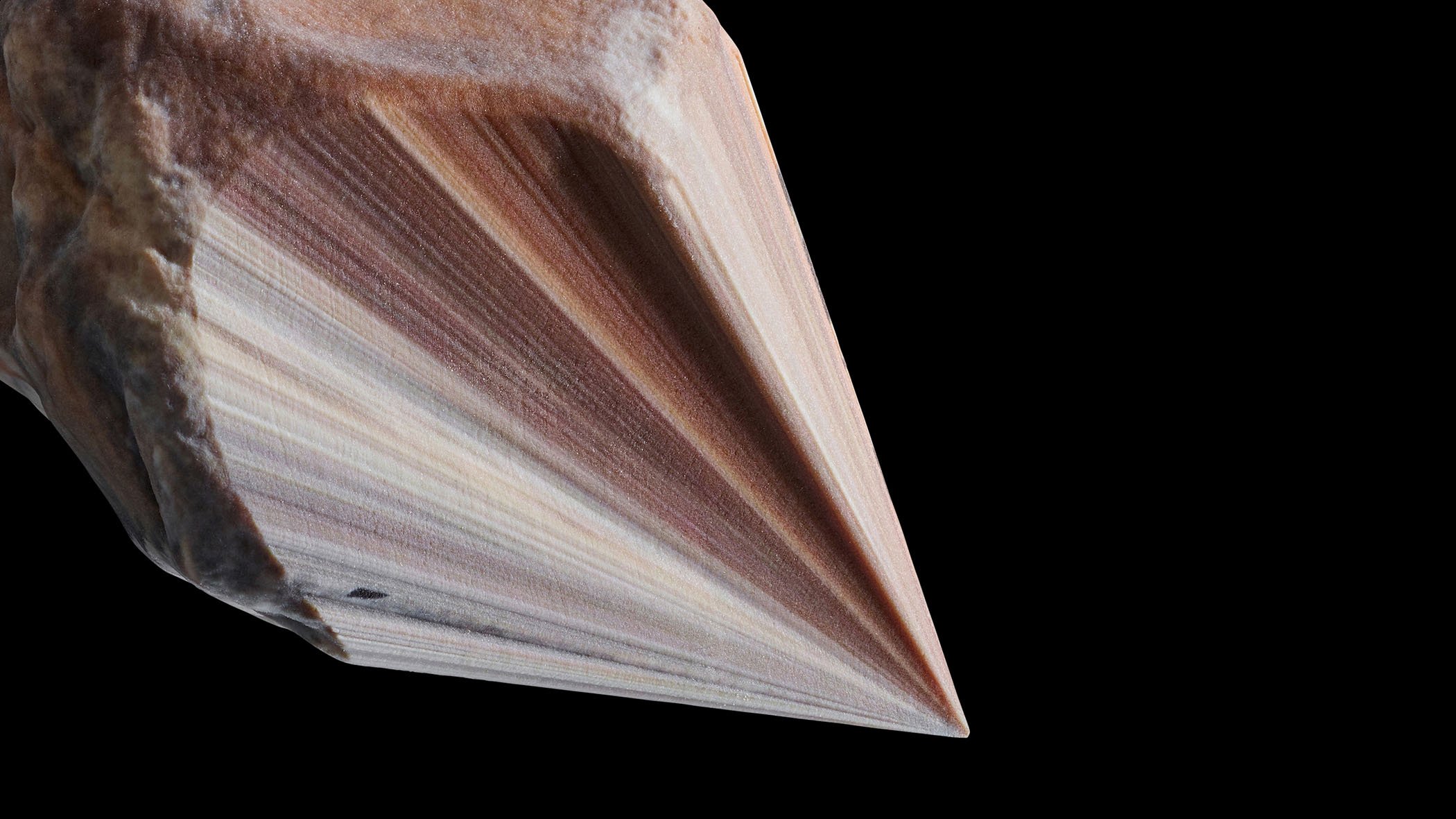

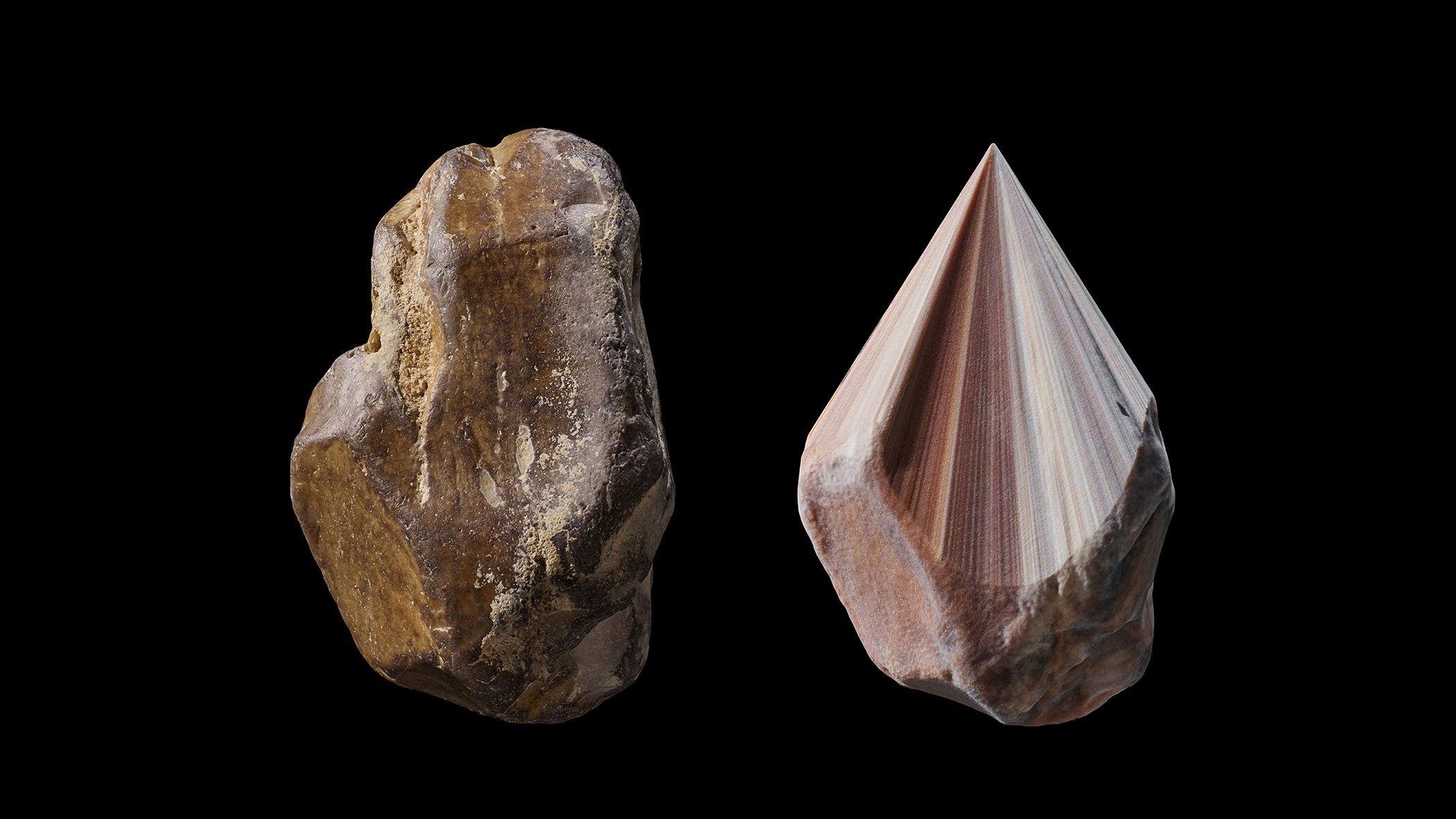


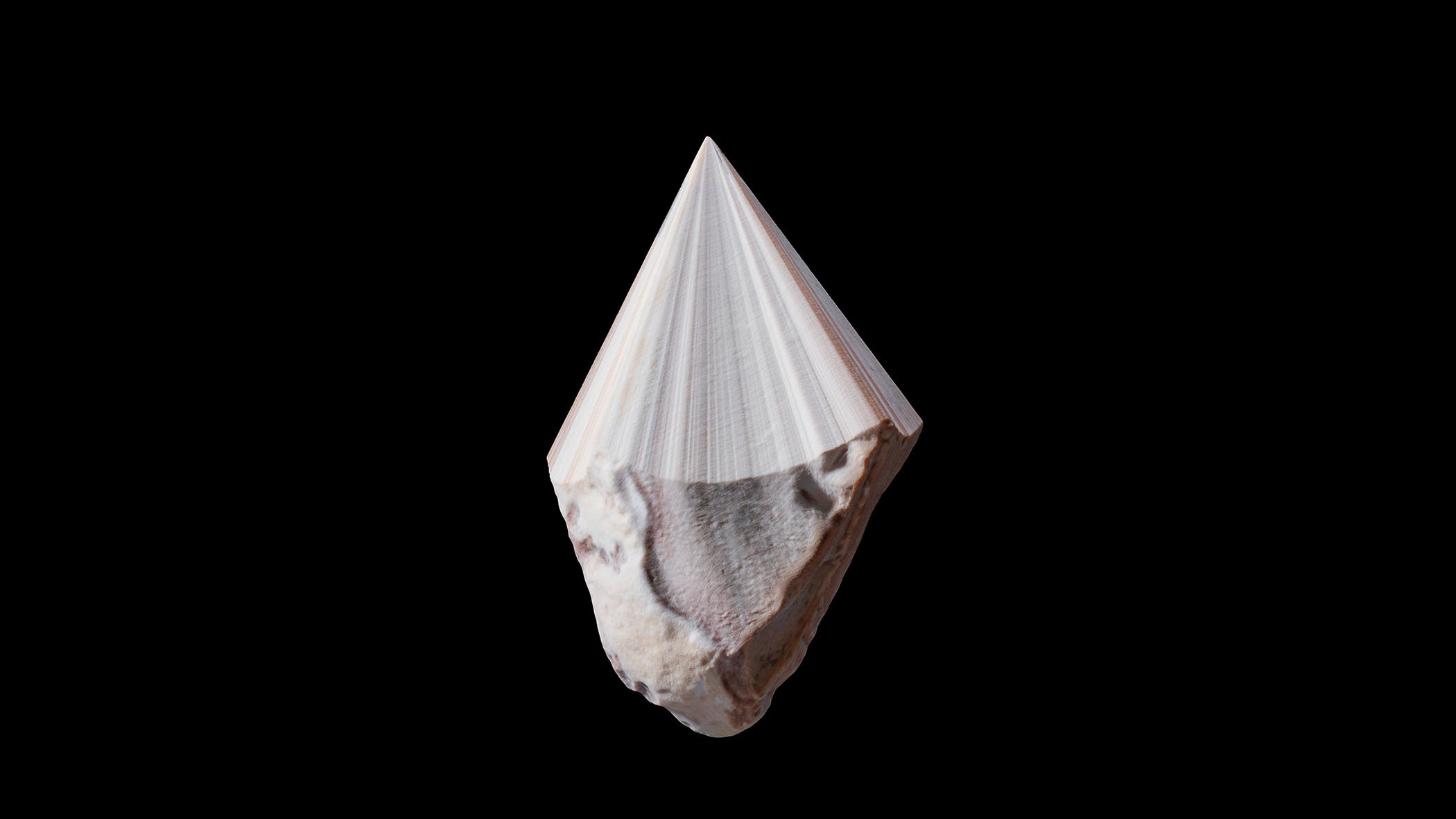
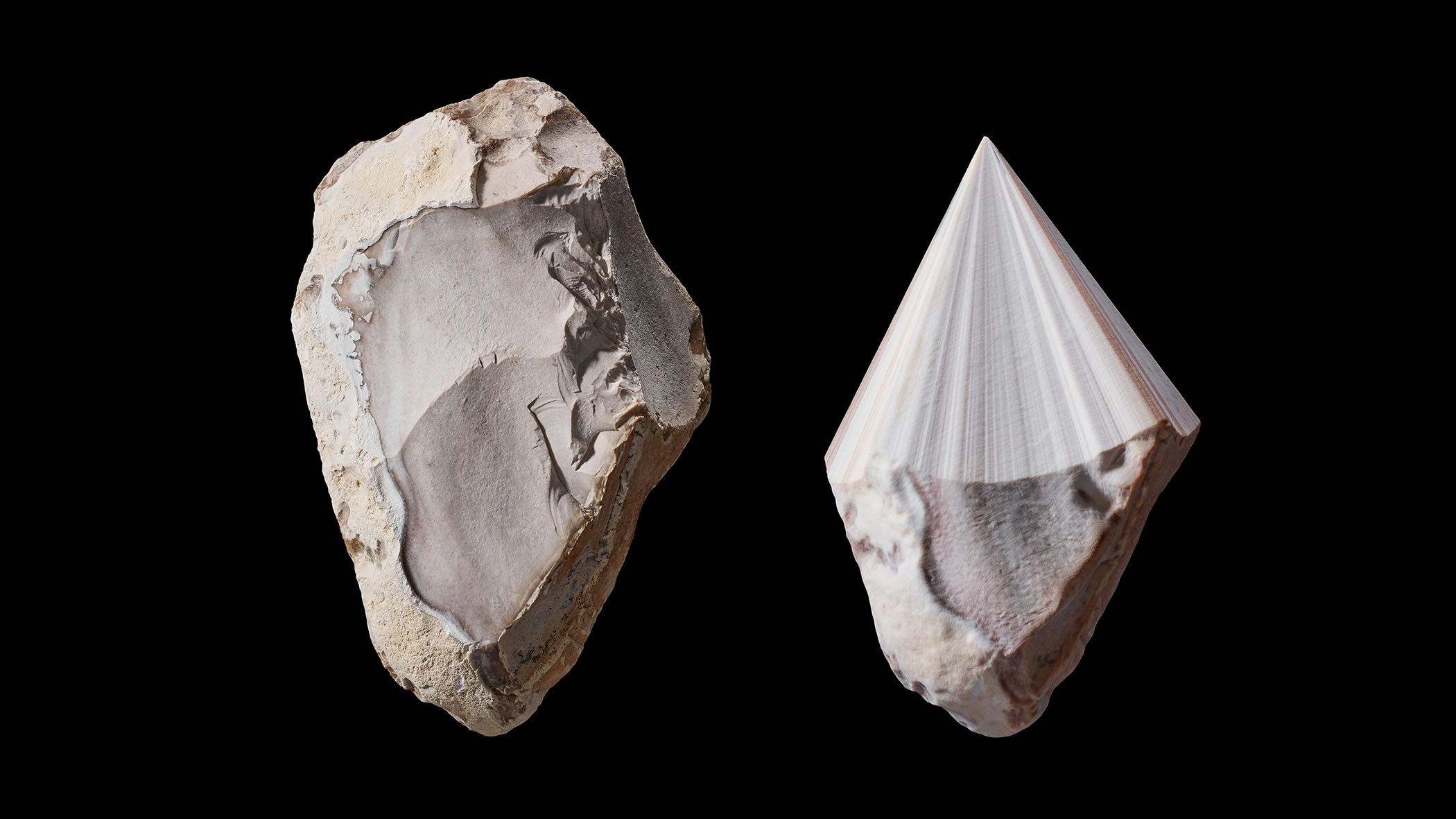

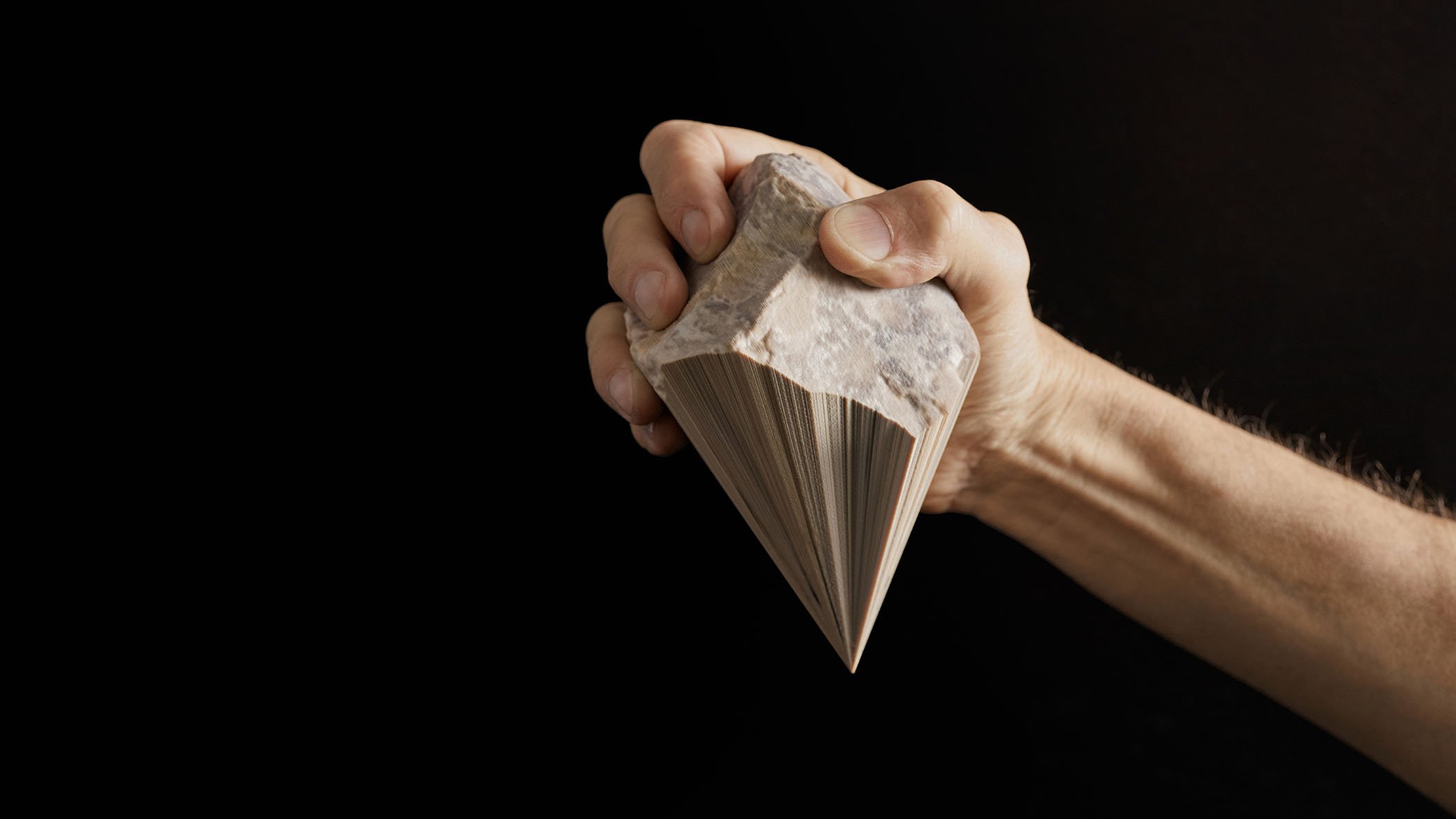
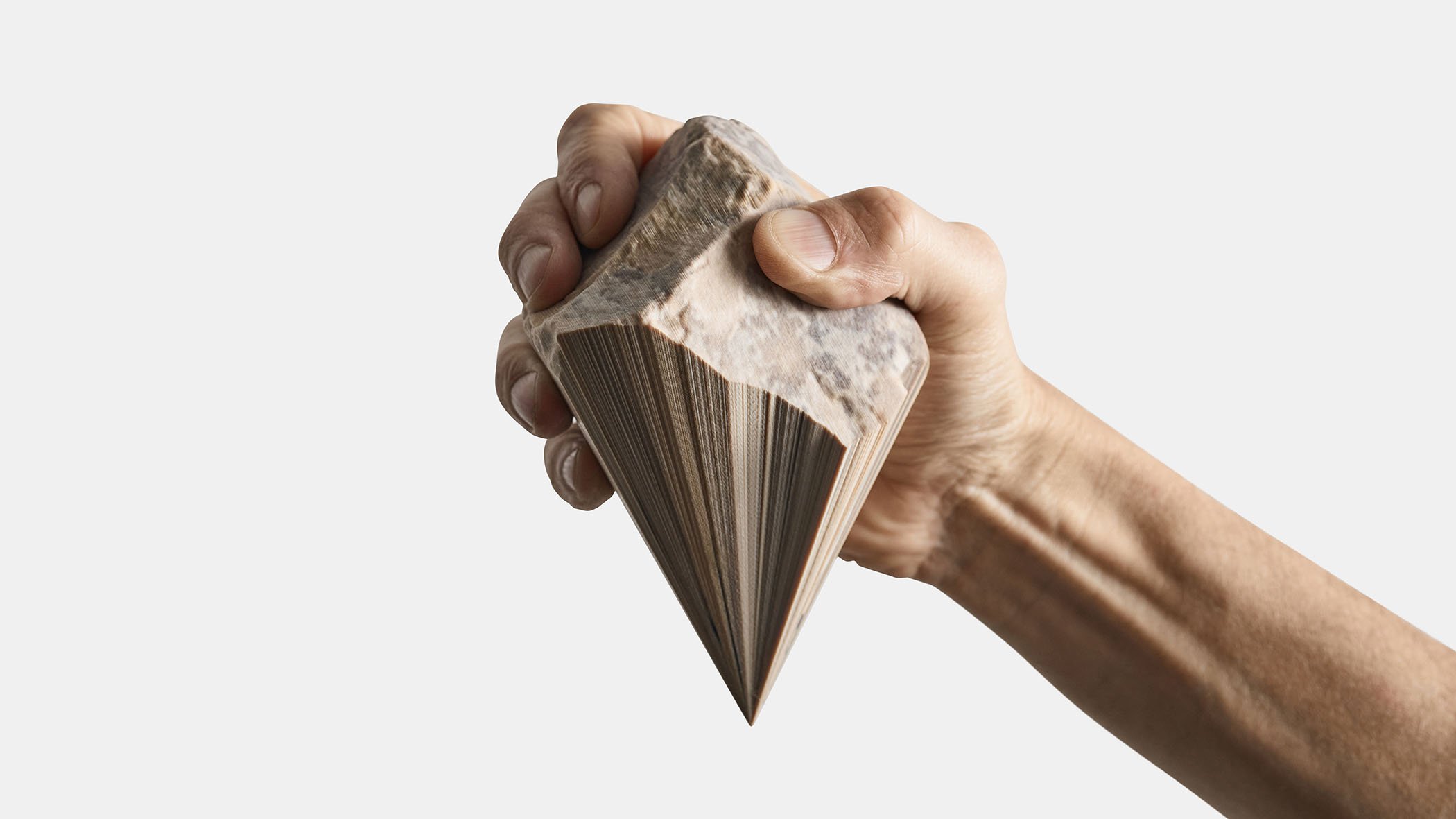
50% Neanderthal / 50% Human
-
This artifact was created by using analytical research software that computes a mean form from a group of prehistoric stone tools. Here the data set consisted of ten Neanderthal hand-axes from a prehistoric site in Le Moustier, France and ten hand-axes knapped by the designer. Based on his ancestry, the designer has 2-5% Neanderthal DNA, but through the creation of this new hand-axe form the interspecies mix has been upped to 50/50.
-
Dov Ganchrow
-
Full-color 3D PolyJet print, 2023
-
Prof. Leore Grosman and Dr. Gadi Herzlinger, The Computational Archaeology Lab in the Hebrew University of Jerusalem's Institute of Archaeology.
The Whole Earth Hand-axe
-
The Whole Earth Hand-axe is a gesture to unity -combining evolutionary backgrounds, our own, as well as those of parallel hominins, through a geographically dispersed common prehistoric tool - the hand-axe. This artifact was created by using analytical research software that computes a mean form from a group of prehistoric stone tools, in this case processing of a group of found hand-axes from Africa, Europe, Central Asia, China, and from the Levant.
-
Dov Ganchrow
-
Full-color 3D PolyJet print, 2023
-
Prof. Leore Grosman and Dr. Gadi Herzlinger, The Computational Archaeology Lab in the Hebrew University of Jerusalem's Institute of Archaeology.
Average of One
-
This artifact was created by using analytical research software that computes a mean form from a large group of prehistoric stone tools. Here the software is used in an unexpected way: by placing and flipping the same artifact into the program twice, an overt self-symmetry assessment is created. Colors indicate deviation from the mean form, with red representing areas with the most form variability and dark blue representing areas where geometry differed less.
-
Dov Ganchrow
-
Knapped flint, and full-color 3D PolyJet print, 2023
-
Prof. Leore Grosman and Dr. Gadi Herzlinger, The Computational Archaeology Lab in the Hebrew University of Jerusalem's Institute of Archaeology.

